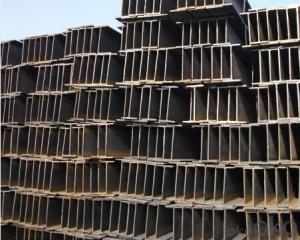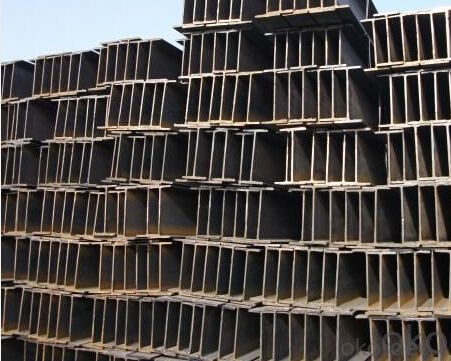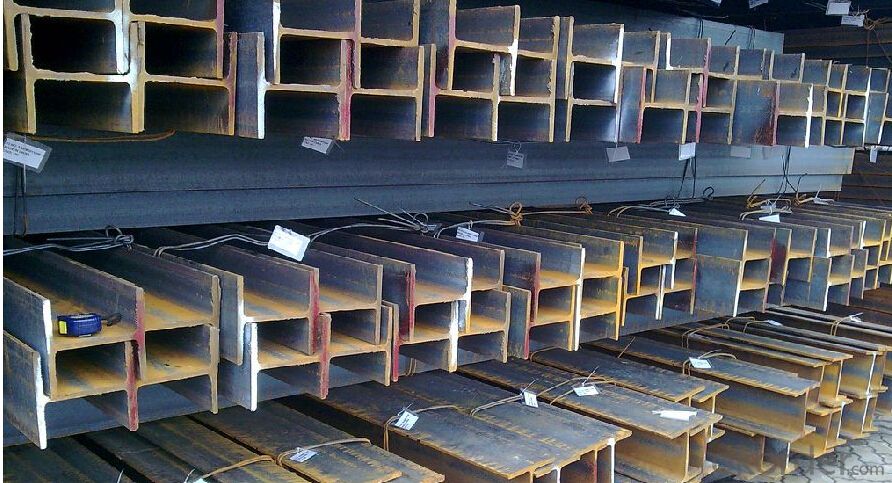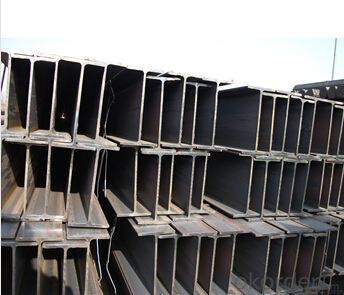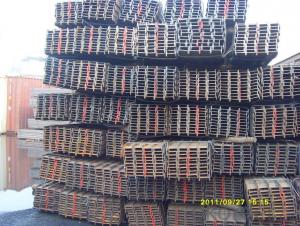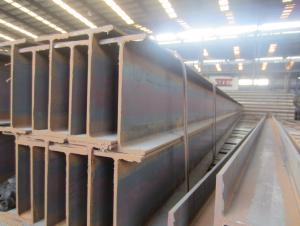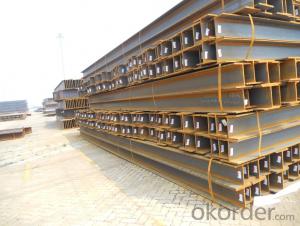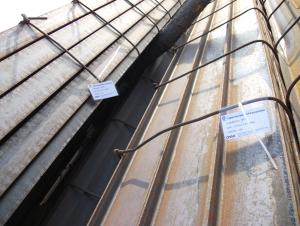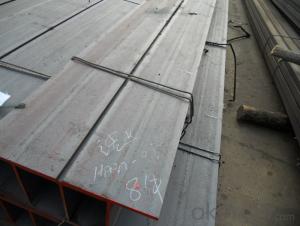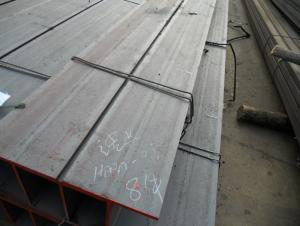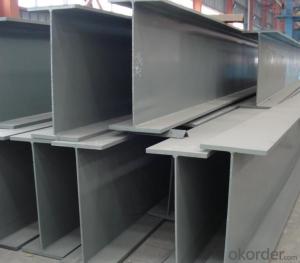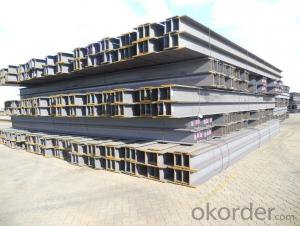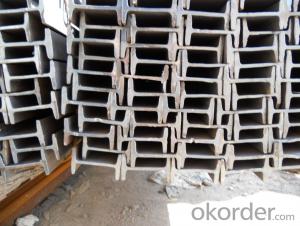Hot Rolled High Prime Structural Steel H Beam
- Loading Port:
- China Main Port
- Payment Terms:
- TT or LC
- Min Order Qty:
- -
- Supply Capability:
- -
OKorder Service Pledge
OKorder Financial Service
You Might Also Like
Product Description:
OKorder is offering Hot Rolled High Prime Structural Steel H Beam at great prices with worldwide shipping. Our supplier is a world-class manufacturer of steel, with our products utilized the world over. OKorder annually supplies products to European, North American and Asian markets. We provide quotations within 24 hours of receiving an inquiry and guarantee competitive prices.
Product Applications:
Hot Rolled High Prime Structural Steel H Beam are ideal for structural applications and are widely used in the construction of buildings and bridges, and the manufacturing, petrochemical, and transportation industries.
Product Advantages:
OKorder's Hot Rolled High Prime Structural Steel H Beam are durable, strong, and resist corrosion.
Main Product Features:
· Premium quality
· Prompt delivery & seaworthy packing (30 days after receiving deposit)
· Corrosion resistance
· Can be recycled and reused
· Mill test certification
· Professional Service
· Competitive pricing
Specifications of Hot Rolled high prime Structural Steel H Beam
1. Standard: GB700-88, Q235B2.
2. Grade: Q235, SS400 or Equivalent
3. Length: 6m,10m, 12m as following table
4. Invoicing on theoretical weight or actual weight as customer request
5.Payment: TT or L/C
6. Sizes:
SIZE(mm) | DIMENSION(kg/m) |
100*100 | 16.9 |
125*125 | 23.6 |
150*75 | 14 |
150*150 | 31.1 |
148*100 | 20.7 |
198*99 | 17.8 |
200*100 | 20.9 |
248*124 | 25.1 |
250*125 | 29 |
Usage & Applications of Hot Rolled High Prime Structural Steel H Beam
Commercial building structure ;Pre-engineered buildings; Machinery support structure; Prefabricated structure; Medium scale bridges; Ship-building structure. etc.
Packaging & Delivery of Hot Rolled Structural Steel H Beam
1. Packing: it is nude packed in bundles by steel wire rod
2. Bundle weight: not more than 3.5MT for bulk vessel; less than 3 MT for container load
3. Marks:
Color marking: There will be color marking on both end of the bundle for the cargo delivered by bulk vessel. That makes it easily to distinguish at the destination port.
Tag mark: there will be tag mark tied up on the bundles. The information usually including supplier logo and name, product name, made in China, shipping marks and other information request by the customer.
If loading by container the marking is not needed, but we will prepare it as customer request.
4. Transportation: the goods are delivered by truck from mill to loading port, the maximum quantity can be loaded is around 40MTs by each truck. If the order quantity cannot reach the full truck loaded, the transportation cost per ton will be little higher than full load.
5. Delivered by container or bulk vessel
Production flow of Hot Rolled Structural Steel H Beam
Material prepare (billet) —heat up—rough rolling—precision rolling—cooling—packing—storage and transportation
FAQ:
Q1: Why buy Materials & Equipment from OKorder.com?
A1: All products offered byOKorder.com are carefully selected from China's most reliable manufacturing enterprises. Through its ISO certifications, OKorder.com adheres to the highest standards and a commitment to supply chain safety and customer satisfaction.
Q2: How do we guarantee the quality of our products?
A2: We have established an advanced quality management system which conducts strict quality tests at every step, from raw materials to the final product. At the same time, we provide extensive follow-up service assurances as required.
Q3: How soon can we receive the product after purchase?
A3: Within three days of placing an order, we will begin production. The specific shipping date is dependent upon international and government factors, but is typically 7 to 10 workdays.
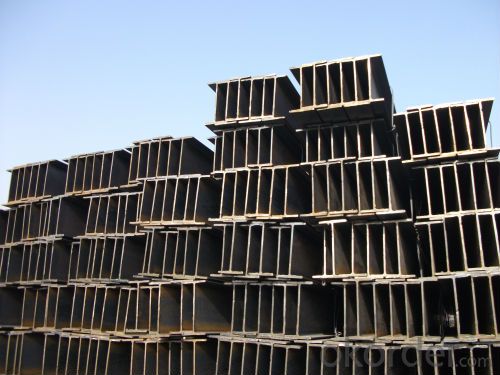

- Q: Can steel H-beams be used for supporting conveyor systems?
- Indeed, steel H-beams possess the ability to support conveyor systems. In construction and industrial domains, these H-beams are widely utilized owing to their exceptional strength and durability. They offer unparalleled assistance in bearing heavy loads and can endure the weight and vibrations inherent in conveyor systems. Moreover, their structure facilitates effortless attachment of other essential components and accessories necessary for conveyor installation. Nevertheless, it is crucial to ascertain that the chosen steel H-beam satisfies the prescribed load-bearing capacity and is appropriately engineered and installed to guarantee the safety and steadfastness of the conveyor system.
- Q: Can steel H-beams be used for wastewater treatment plants?
- Indeed, wastewater treatment plants can indeed employ steel H-beams. Due to their robustness and endurance, steel H-beams are frequently employed in construction. In the context of wastewater treatment plants, they serve multiple purposes, including bolstering heavy machinery and structures, delivering structural support for tanks and basins, and erecting walkways and platforms. The sturdiness of steel H-beams enables them to endure the harsh and corrosive conditions within wastewater treatment plants, rendering them a fitting choice for this particular utilization. Furthermore, steel H-beams can be easily fabricated and tailored to meet specific design prerequisites, allowing for versatility in various applications within wastewater treatment plants.
- Q: How do steel H-beams perform in areas with high snow load?
- Steel H-beams perform exceptionally well in areas with high snow loads due to their strong structural properties. The H-shape of the beams provides increased strength and resistance against bending and deflection under heavy snow loads. This makes steel H-beams an ideal choice for construction in regions prone to significant snowfall, ensuring the structural integrity and safety of the buildings.
- Q: Are steel H-beams cost-effective compared to other materials?
- Steel H-beams are generally considered cost-effective when compared to other construction materials. Their durability, strength, and versatility make them a popular choice in various applications, such as building structures, bridges, and industrial projects. While initial costs may be higher than some alternatives, their long lifespan, low maintenance requirements, and ability to withstand heavy loads often offset the initial investment. Additionally, steel H-beams can be easily fabricated and assembled, reducing construction time and labor costs. Overall, their cost-effectiveness in terms of performance, longevity, and ease of use makes them a preferred choice for many construction projects.
- Q: Can steel H-beams be used in hotel and resort construction?
- Indeed, hotel and resort construction can utilize steel H-beams. The construction industry commonly employs steel H-beams due to their strength, durability, and versatility. They serve as a dependable and stable structural support system, making them suitable for various applications in hotel and resort projects of a large scale. Steel H-beams bring forth numerous advantages in hotel and resort construction. Firstly, their ability to bear heavy loads makes them perfect for supporting multiple floors, walls, and other building components. This enables the construction of spacious and expansive structures, which are often desired in hotel and resort endeavors. Furthermore, steel H-beams boast the capacity to span longer distances compared to alternative construction materials, thus reducing the need for additional support columns or walls. This design concept of an open floor plan is often favored in hotels and resorts as it creates generous and adaptable spaces for amenities like restaurants, conference rooms, and recreational areas. Another benefit of employing steel H-beams is their resistance to fire, pests, and natural disasters. Steel is non-combustible, thus providing an extra layer of safety in hotel and resort construction. Additionally, steel is impervious to termites or other pests, which may pose a threat in certain locations. Moreover, steel is renowned for its ability to withstand earthquakes, hurricanes, and other natural calamities, making it a reliable choice for hotel and resort projects situated in high-risk areas. To conclude, steel H-beams are undoubtedly suitable for hotel and resort construction. Their strength, durability, versatility, and resistance to fire and natural disasters make them an ideal option for creating secure, expansive, and open structures in the hospitality industry.
- Q: Are steel H-beams suitable for structures with high wind loads?
- Yes, steel H-beams are suitable for structures with high wind loads. H-beams are designed to provide strength and stability to structures, making them ideal for withstanding strong winds. The unique shape of the H-beam allows it to distribute the load evenly and efficiently, reducing the risk of structural failure. Additionally, steel is known for its high tensile strength, which means it can withstand the forces exerted by high winds without deforming or collapsing. Therefore, using steel H-beams in structures with high wind loads ensures the integrity and safety of the building.
- Q: Are steel H-beams easy to install?
- Steel H-beams can be relatively easy to install, especially when compared to other structural materials. Their design allows for quick and efficient installation, making them a popular choice in construction projects. The standardized shape and size of H-beams simplifies the installation process as they can be easily aligned and connected. Additionally, their high strength-to-weight ratio makes them ideal for supporting heavy loads, reducing the need for additional structural elements and further simplifying the installation. However, it is important to note that professional expertise and proper equipment are still required to ensure a safe and successful installation.
- Q: What is the height of the four fillet welds in H steel submerged arc welding, such as H600*300*6*12?
- If the two plate welding, plate thickness is 12, the value is 0.7 and the thickness (refer to the design of a request) if there is important structures such as crane beam (refer to the design without the requirement of weld size) as above, but must use full penetration welding
- Q: What are the mechanical properties of steel H-beams?
- Steel H-beams possess a variety of mechanical characteristics that render them suitable for a broad range of uses. To commence, H-beams exhibit a remarkable degree of tensile strength, enabling them to endure substantial amounts of tension or pulling forces without fracturing or distorting. This attribute renders them ideal for implementation in structures that necessitate the support of hefty loads, such as bridges or high-rise buildings. Moreover, H-beams boast exceptional yield strength, denoting the extent of stress a material can endure prior to undergoing permanent deformation. This feature guarantees that H-beams can withstand bending or buckling under substantial loads, thereby ensuring structural stability and preventing collapse. An additional significant mechanical property of steel H-beams is their rigidity or modulus of elasticity. This attribute determines the extent to which a material will deform under a given amount of stress. H-beams possess a high modulus of elasticity, signifying that they are comparatively inflexible and can sustain their shape and structural integrity even when subjected to substantial loads. Furthermore, steel H-beams exhibit commendable resistance to fatigue, permitting them to endure repeated cycles of loading and unloading without failure. This characteristic is pivotal in structures subject to dynamic loads, such as bridges or cranes, where the material is incessantly exposed to varying forces. Lastly, H-beams possess exceptional weldability, facilitating their simple fusion to form larger structures or modify existing ones. This attribute is crucial for construction endeavors that demand flexibility and adaptability in design. In conclusion, the mechanical properties of steel H-beams, comprising high tensile strength, yield strength, rigidity, fatigue resistance, and weldability, render them a popular choice in the fields of structural engineering and construction.
- Q: Can steel H-beams be used in the construction of transportation hubs or terminals?
- Yes, steel H-beams can definitely be used in the construction of transportation hubs or terminals. Steel H-beams are commonly used in construction projects due to their high strength and durability. They provide excellent load-carrying capabilities, making them ideal for supporting heavy structures such as transportation hubs or terminals. H-beams are commonly used in the construction of bridges, airports, railway stations, and other transportation infrastructure. Their versatility allows for efficient and cost-effective construction, as they can be easily fabricated and installed. Additionally, steel H-beams have good resistance to corrosion and fire, ensuring the longevity and safety of the transportation hub or terminal. Overall, steel H-beams are a popular choice in the construction industry for their structural integrity and suitability for transportation hub or terminal projects.
Send your message to us
Hot Rolled High Prime Structural Steel H Beam
- Loading Port:
- China Main Port
- Payment Terms:
- TT or LC
- Min Order Qty:
- -
- Supply Capability:
- -
OKorder Service Pledge
OKorder Financial Service
Similar products
Hot products
Hot Searches
Related keywords
